2019 Toyota RAV4 Vs Subaru Forester

Crossovers are everywhere these days, but finding one that’s really rugged and ready for adventure leaves you with just a few options including the Toyota RAV4 and Subaru Forester.
Here are two of the newest crossovers that promise extra capability in rough conditions, and lucky for us, we’re in the middle of a snowy winter. Let us see if the RAV4 can keep up with the Forester in all this snow.
Get a Quote on a New Toyota RAV4 or Subaru Forester2019 Toyota RAV4
The Toyota RAV4 is newer, having hit the market just a few months ago. It features a great new design that lets the crossover look more rugged and capable than before. It also has a new platform, engine, all-wheel-drive system and the interior has been drastically redone this year. Simply put, Toyota is playing for keeps.
Under the hood is a 2.5-liter four-cylinder that makes 203 horsepower and 184 lb-ft of torque. It can sound pretty gruff at times which is either a pro or con depending on how rugged you want the vehicle to sound. The motor is paired to an eight-speed automatic, and naturally, our tester features all-wheel-drive. This AWD system has torque vectoring and a rear driveline disconnect for improved fuel economy. Additionally, there are a few off-road settings to flip through. This helps adjust the traction and stability control systems, and predetermine how much power goes to each of the four wheels when you set off. While driving in the normal setting it feels like the car is biased to the front wheels, but the other settings feel more balanced, sending power to the rear.
See Also: 2019 Toyota RAV4 First Drive Review
Do buyers really need all these settings? Perhaps it helps provide some confidence, but the RAV4 is one of Toyota’s most popular vehicles, and it’s unlikely that the majority of its buyers will need or even use these settings. The settings won’t turn the vehicle into some off-roading, rock-crawling monster, but will help the vehicle feel more composed and confident in sticky (or slippery situations). So far the system has felt pretty good, but not as surefooted or predictable as the Foresters.
Additionally, there are non-all-wheel drive related drive modes to switch between as well: Sport, Eco and Snow modes. The Sport mode makes the car more responsive and holds onto gears a bit longer, while the Eco mode is pretty much the opposite, shifting up gears as quickly as possible to save fuel. The Snow mode seems to start the car in second gear to prevent wheelspin. Combined fuel economy for this model is 28 MPG which is a tick below that of the Forester.
Driving the RAV4 is a surprise. The new bones beneath this pretty sheetmetal are similar to Toyota’s latest hits like the Corolla Hatchback and C-HR. As a result, this larger crossover is really direct feeling, as its nice and responsive on the road. This is so far removed from the past RAV4s (which weren’t at all fun to drive, either they were soft and floppy, or too stiff), and is a huge upgrade for the new model. The chassis is solid and doesn’t get rattled easily. This is all an advantage over the Subaru, but the Toyota was acting oddly at low speeds, as if the transmission didn’t know what to do when coming to a stop sign. It was extremely unrefined and unbecoming of the Toyota quality we’ve come to expect.
The RAV4 has a lot of driver assistance and safety features including pre-collision warning system with pedestrian detection, adaptive cruise control, lane-departure warning, automatic high beams, road-sign recognition and much more. It comes with many of these as standard equipment as well, which is much appreciated.
While the RAV4 is pretty solid on the road it comes up short in a number of ways in terms of space.
It has only 98.9 cubic feet of passenger space, which is less than the Forester. In terms of cargo space, the trunk features 37.5 cubic feet of storage which is more than the Forester, but fold down the rear seats and you’ll get less than 70 cubes to play with. Finally, when it comes to both legroom and headroom in the front and rear of the RAV4 you’re looking at less in this vehicle when compared to the Subaru.
ALSO SEE: Toyota Highlander vs 4Runner: Which SUV is Right for You?
Despite the limiting space, the RAV4 has a really nice cabin. I really like the layout and controls, especially the large rubberized knobs which feel really nice and tactile. The materials are also top notch, and the RAV4 features lots of shelves and cubbies which are always helpful in a family vehicle. There’s a lot of in cabin technology too.
Five USB ports are helpful for charging your gear (not to mention the included wireless charging pad), and you can even get Apple Car Play on the infotainment system, which is a huge help because the standard infotainment system is pretty rough around the edges, with really bad graphics. There’s also a wireless charging system, which is something the Forester doesn’t have at all. Some might make a big deal about the 800-watt JBL sound system, but I don’t think it’s that impressive. If you want to save some money you may want to skip that option.
As equipped, this Limited model has just about every feature you can think of, except for a panoramic moonroof. With delivery, it costs $39,010 which is a few thousand dollars more than the Forester. On the surface, it’s hard to see the justification of that extra cost, but Toyotas are known for their incredible reliability and low costs of ownership. Despite their recent struggles, Subaru is also known for lasting forever too, so let’s see how the Forester stacks up.
2019 Subaru Forester
Right away, you can tell that the Forester lacks a certain flair compared to the RAV4. It’s not as pretty, but that may be the only significant flaw. Fortunately, there’s a bright side, literally, as the Forester’s boxy shape allows it to have plenty of visibility and makes the interior feel more spacious.
ALSO SEE: Where Is Subaru From and Where Are Subarus Made?
That interior is nice too, with nice brown, buttery leather, shiny materials, and a much better infotainment system than the Toyota’s. The infotainment system also has support for both Android Auto and Apple Car Play, which is more accommodating than Toyota’s system. The touch-screen is bright and easy to use with giant on-screen buttons, and there are plenty of USB ports for charging your devices.
And despite those big HVAC toggles in the RAV4, this one has bigger and more useable buttons, unlike that one that has teeny tiny little buttons. You get more space in here too at least for passengers. That matters, because no matter what the drive modes say, these are family cars first so space matters.
Under the hood is a 2.5-liter flat-four-cylinder engine, which makes 182 horsepower and 176 lb-ft. It’s paired to a CVT that sends power to all four wheels. This setup sounds less powerful on paper, and can be a bit buzzy at times, but it comes with the added benefit of improved fuel economy. It earns a combined 29 MPG, which is solid. There are a few drive modes to toggle around with, two which impact the throttle response and transmission behaviour, which are curiously named SI-Drive and Sport Sharp. There is also a two-stage X-Mode drive system, which is designed specifically for off-roading situations. One stage is for simple off-road conditions, while the other is for deeper stuff which is usually intimidating.
ALSO SEE: 2019 Subaru Crosstrek vs Forester: Which Subaru Crossover is Right For You?
On the road, the two cars feel similarly, but the Subaru feels a little smoother thanks to its CVT. Simply put there are fewer stutters from the transmission and power delivery is predictable and expected. The all-wheel-drive system feels more balanced than Toyota’s providing a better drive in inclement weather. You’ll find that there’s a little more ground clearance in the Forester too, adding to the confidence of the Subaru over the Toyota.
See Also: 2019 Subaru Forester vs Mazda CX-5 vs Honda CR-V
The Subaru also offers lots of safety equipment and driver assistance features, including an automatic rear braking system and a driver-facing camera that is designed to prevent distracted driving. Unlike the RAV4, these features don’t come standard, but the Forester is more affordable when you get everything. Our tester rings in at $35,270 which is much more affordable.
The Verdict: 2019 Toyota RAV4 vs 2019 Subaru Forester
As much as these crossovers are billed as off-road focused vehicles, the fact is that they need to be family friendly and ready for the daily drive. If you wanted an uncompromised off-roader, there’s always a Jeep Wrangler. But while these two vehicles have rugged features, only one is more family-friendly and easier on the wallet. The Forester is our choice, because of its lower price point, smoother ride, safety tech, and better fuel economy. It also has a fantastic all-wheel-drive system to help you get out of sticky situations.
ALSO SEE: How Does Subaru AWD Work?

Sami has an unquenchable thirst for car knowledge and has been at AutoGuide for the past six years. He has a degree in journalism and media studies from the University of Guelph-Humber in Toronto and has won multiple journalism awards from the Automotive Journalist Association of Canada. Sami is also on the jury for the World Car Awards.
More by Sami Haj-Assaad



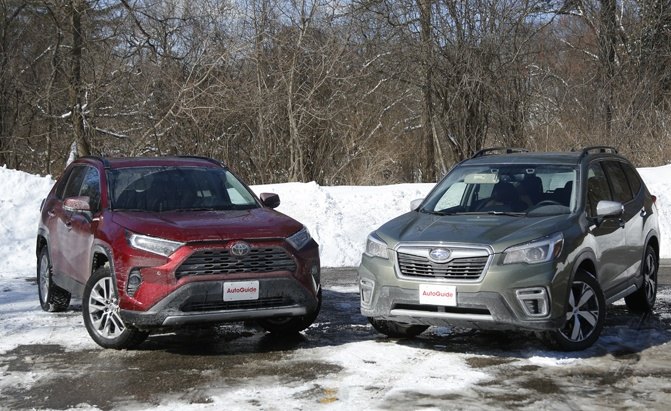





















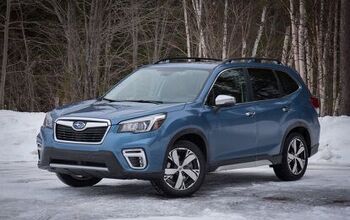

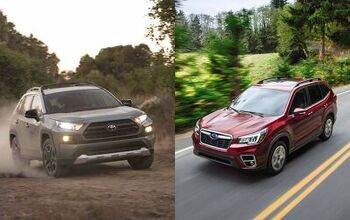
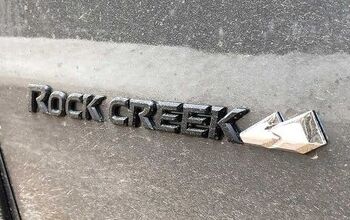
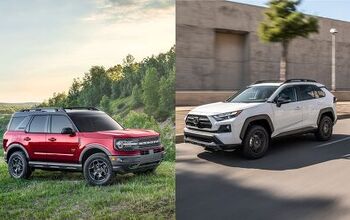










Comments
Join the conversation